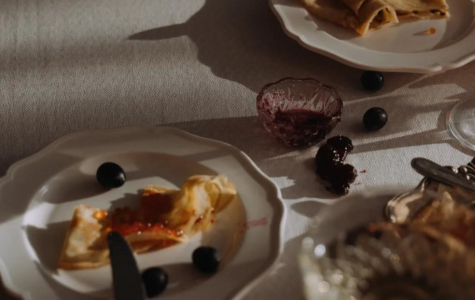
ExtraFood is honored to be included in the Marin IJ's article on food waste by Vicki Larson.
Read the article in the Marin Independent Journal
Vicki Larson: So many in Marin are hungry, so much food goes to waste
Recently someone asked on Twitter to name the go-to restaurant people associate with their childhood, the place their family went for special occasions.
Hundreds of people chimed in but I could not. I grew up in a family that never went out to eat, even on special occasions. Oh, we might have gone to Lum’s, an excellent Cantonese restaurant on Northern Boulevard in Flushing, Queens, about once a year, but that was it. It was a luxury. My dining-out life didn’t really kick in until my mid-20s, when I was newly divorced and dating.
Before the pandemic, my friends and I would eat out two to three times a week, especially if there was live music involved. (Miss you, Terrapin Crossroads.) Now? Dining out feels like a luxury again, what with the living wage surcharges on top of pricier meals thanks to the rising cost of food. And of course I want to tip generously not only because I’m so thankful that some of my favorite restaurants survived the pandemic, but also because servers work hard, get paid little and have to deal with all sorts of abuse from customers.
Lately, though, I’m finding another reason to want to think long and hard before I dine out. Food waste.
It’s not something I thought much about before, I’m embarrassed to admit, because I was not aware that food waste accounts for around 8% of global greenhouse emissions. Restaurants have a great impact on the climate. If the meats, poultry and fish aren’t coming from nearby ranches and fishing boats, then they’re being flown in from far-flung places. You and I might cut out a browning edge of a lettuce leaf, or questionable sprout growing from a potato, or try to revive a limp half-bunch of cilantro at home, but that doesn’t always fly at a restaurant. Restaurants, especially those considered fine dining restaurants, discard food with blemishes or that are deemed “unsightly.” A lot of that still-edible food ends up in landfill. Plus, we often order more than we can finish when we dine out, especially at restaurants with more-than-generous portions.
Slowly that’s changing.
Earlier this month I visited a dear friend in Washington, D.C., who started the area outpost of Food Rescue US a few years ago. I got to see her and her volunteers in action, salvaging an incredible amount of food from the Sunday Dupont Plaza farmers market that in years past would have gone to waste and now is going to feed DC’s and Virginia’s most needy.
Marin is lucky to have ExtraFood, which through its various programs rescues thousands of pounds of food from Marin’s schools, restaurants, farmers markets and grocery stores.
Still, we must do better. About 11.2 billion pounds of food — often fresh enough to eat — end up in California’s landfills each year. The state passed SB 1383, which requires that by 2025 California recovers 20% of edible food to feed people in need. But that’s in two more years. And it’s just 20%.
I reached out to ExtraFood’s senior marketing manager Mandy Willian after hearing that parents at a local school have been ordering free lunches that go uneaten, and then have to be thrown out. Although ExtraFood has rescued more than 162,000 pounds of surplus school meals, fruit, vegetables and milk, she tells me, “sadly, we know there is waste. Some of the issues with schools donating their surplus food include having access to refrigeration. If they can’t chill their meals once lunch is over, we can’t transport them due to food safety issues. Additionally, it takes a champion coordinator (a parent or administrator) on the school side to be proactive about the logistics.”
Who will be that person at every school?
With so many of Marin’s residents food insecure, especially now that CalFresh recipients will stop getting additional benefits given during the pandemic at the end this month — that’s more than 14,000 people who call Marin home — this kind of waste give me pause. It should give all of us pause.
Many Marin restaurants list what farm their vegetables come from, the ranchers their meat comes from, the captain who caught their fish sustainably. Maybe we should asking what they do with their food waste, too.
Vicki Larson’s So It Goes opinion column runs every other week. Contact her at vlarson@marinij.com and follow her on Twitter at OMG Chronicles.
Photo credit: Cottonbro Studio/Pexels